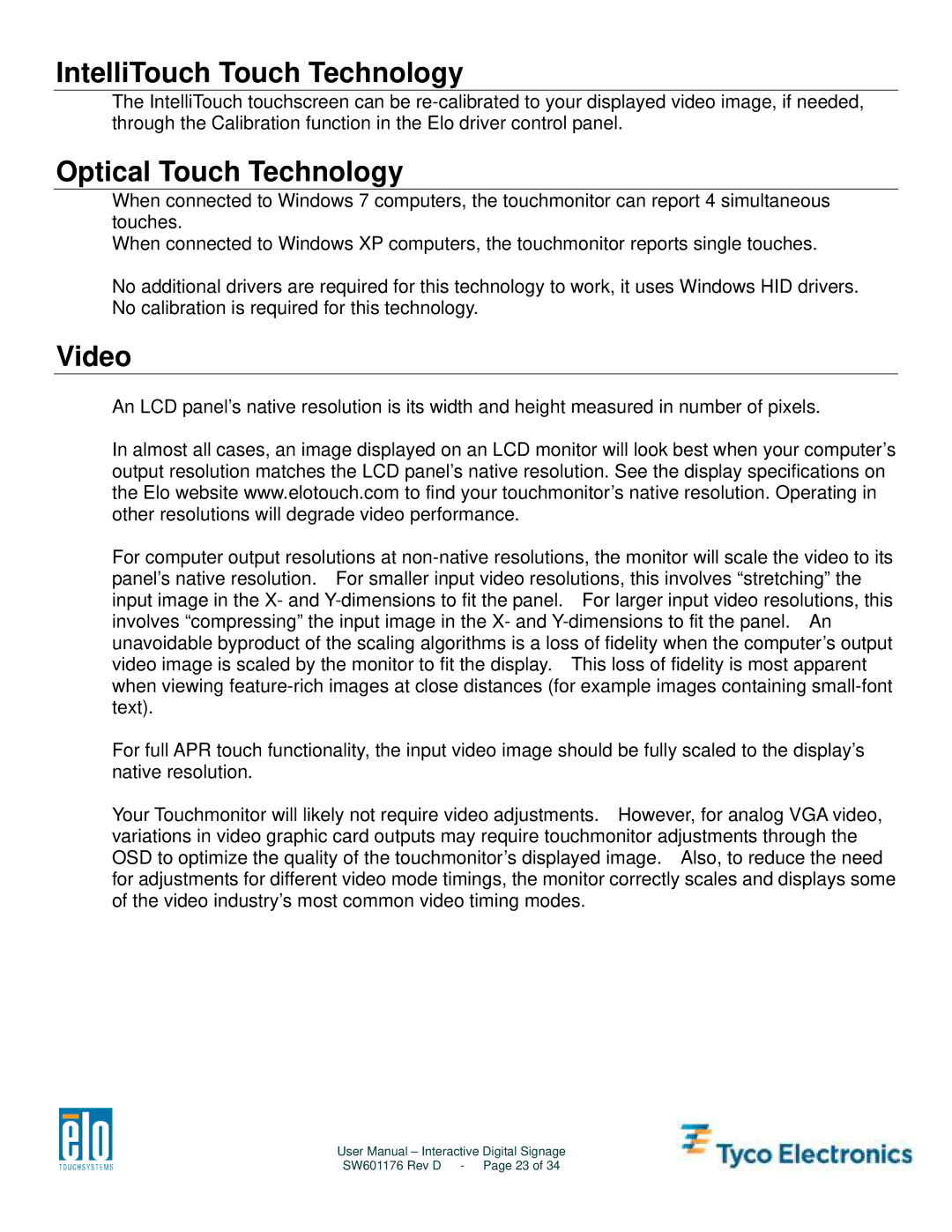
IntelliTouch Touch Technology
The IntelliTouch touchscreen can be
Optical Touch Technology
When connected to Windows 7 computers, the touchmonitor can report 4 simultaneous touches.
When connected to Windows XP computers, the touchmonitor reports single touches.
No additional drivers are required for this technology to work, it uses Windows HID drivers. No calibration is required for this technology.
Video
An LCD panel’s native resolution is its width and height measured in number of pixels.
In almost all cases, an image displayed on an LCD monitor will look best when your computer’s output resolution matches the LCD panel’s native resolution. See the display specifications on the Elo website www.elotouch.com to find your touchmonitor’s native resolution. Operating in other resolutions will degrade video performance.
For computer output resolutions at
For full APR touch functionality, the input video image should be fully scaled to the display’s native resolution.
Your Touchmonitor will likely not require video adjustments. However, for analog VGA video, variations in video graphic card outputs may require touchmonitor adjustments through the OSD to optimize the quality of the touchmonitor’s displayed image. Also, to reduce the need for adjustments for different video mode timings, the monitor correctly scales and displays some of the video industry’s most common video timing modes.
User Manual – Interactive Digital Signage
SW601176 Rev D - Page 23 of 34
